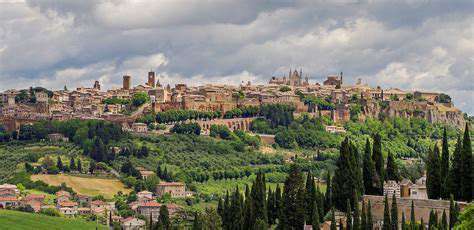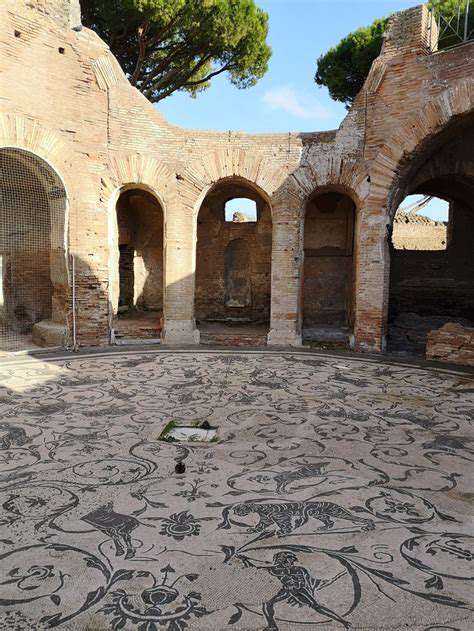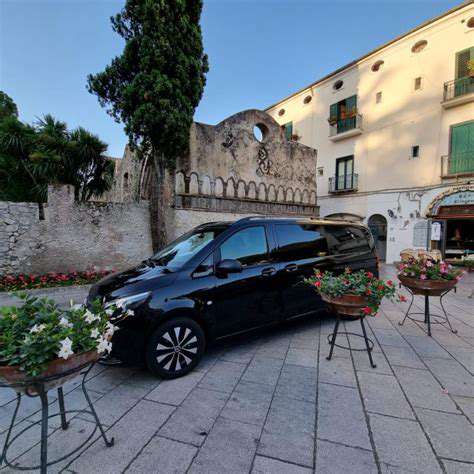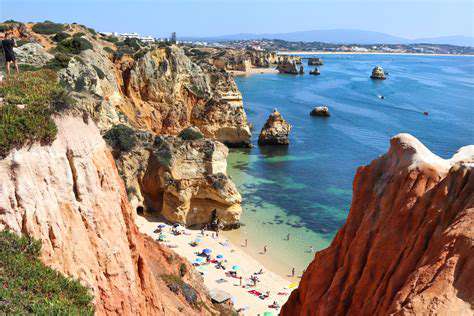Best Day Trips from Rome by Train [Escape the City]

A Medieval Gem in Umbria
Perched atop a volcanic plateau in Umbria, Orvieto captivates visitors with its medieval charm and rugged beauty. The city's skyline, dominated by ancient towers and weathered stone buildings, tells stories of centuries past. What makes Orvieto truly special isn't just its postcard-perfect views, but how the entire city seems frozen in time while still pulsing with modern life.
Wandering through Orvieto feels like stepping into a living history book. Every alleyway reveals another surprise - perhaps a hidden courtyard with a bubbling fountain or a tiny workshop where artisans practice trades unchanged for generations.
The Duomo's Majestic Presence
Orvieto's cathedral stands as one of Italy's most spectacular religious buildings, its striped marble facade glowing golden in the afternoon sun. The level of detail in the biblical scenes carved into the cathedral's front will leave you awestruck, with each figure appearing almost alive in the stone. Visitors often spend hours just admiring the exterior before even stepping inside.
When you do enter, prepare for your breath to be taken away again. The Chapel of San Brizio features frescoes that influenced Michelangelo himself, their vibrant colors and dramatic compositions still vivid after more than five centuries.
Exploring the Etruscan Roots
Beneath the medieval surface lies an even older story. The Etruscans chose this dramatic clifftop location for their settlement over 2,500 years ago, carving an entire network of wells and tunnels into the soft volcanic rock. Their ingenious water collection system, the Pozzo della Cava, remains functional today - a testament to ancient engineering brilliance.
Orvieto's Culinary Delights
Umbrian cuisine shines in Orvieto's restaurants and markets. You haven't truly experienced Orvieto until you've tasted strangozzi pasta tossed with black truffles, accompanied by a glass of the local Orvieto Classico wine. The earthy flavors reflect the surrounding landscape, with dishes changing seasonally based on what's fresh from local farms.
Don't miss the opportunity to visit one of the enotecas (wine shops) carved into the volcanic rock, where you can sample wines in cool, atmospheric cellars that maintain perfect temperatures naturally.
Underground Treasures
The city's most fascinating secrets lie beneath your feet. Over 1,200 caves, tunnels, and cisterns wind through the soft tufa rock, some dating back to Etruscan times. These underground spaces served as everything from olive presses to pigeon coops, and today offer visitors a cool respite from the summer heat along with a unique perspective on urban history.
The City's Vibrant Culture
Orvieto buzzes with cultural energy year-round. From the spring Corpus Christi procession featuring medieval costumes to autumn's Umbria Jazz Festival, there's always something happening. The local artisans keep traditional crafts alive, with workshops producing exquisite ceramics, leather goods, and lace that make perfect souvenirs.
A Historical Journey
What stays with visitors longest isn't any single monument, but the profound sense of connection across time. Standing on the Piazza del Popolo at sunset, with the golden light washing over buildings that have stood for 800 years, you'll feel history breathing all around you. Orvieto doesn't just display its past - it invites you to become part of its continuing story.

Beyond the City: Matera
A Cave City's Unique Charm
Matera's extraordinary sassi dwellings create a landscape unlike anywhere else on Earth. These ancient cave homes, carved directly into the limestone cliffs, have been continuously inhabited for over 9,000 years - making Matera one of the world's oldest living cities. Walking through the sassi at golden hour, when the warm light makes the stone glow, feels like wandering through a fantasy novel's setting.
The city's rebirth from poverty-stricken slum to cultural treasure demonstrates the resilience of both the stone structures and the community that calls them home. Today, many caves have been transformed into boutique hotels, allowing visitors the extraordinary experience of sleeping in a room last occupied centuries ago.
Savor the Local Flavors
Matera's cuisine tells the story of peasant ingenuity, with simple ingredients transformed into memorable dishes. The signature bread, made from durum wheat and baked in wood-fired ovens, has such cultural importance it's protected by EU designation. Pair it with the region's peppery olive oil and some aged pecorino for a perfect snack.
For something heartier, try the crapiata, a traditional bean and grain soup that sustained generations of Matera's inhabitants. The local restaurants in the sassi offer atmospheric dining experiences, with tables set in caves lit by flickering candlelight.
A Day Trip Worthy of Exploration
While the journey from Rome takes several hours, Matera rewards every minute of travel time. The approach to the city is dramatic - suddenly the honey-colored stone dwellings appear carved into the ravine, looking almost like a natural rock formation. Stay overnight if possible, as the city transforms after day-trippers leave, with the sassi glowing under carefully placed lighting that accentuates every curve of the ancient stone.
The surrounding countryside offers stunning hikes through rocky gorges dotted with cave churches, many decorated with medieval frescoes. These hidden gems make perfect excursions before returning to enjoy Matera's vibrant evening atmosphere.
![Planning a Family Camping Trip [Beginner's Guide]](/static/images/27/2025-04/MakingtheMostofYourCampingExperience.jpg)






![Packing Guide for a Camping Trip [What You Need]](/static/images/27/2025-06/NavigationandSafetyGearforaSecureAdventure.jpg)
![Guide to Visa Requirements for the Schengen Area [2025]](/static/images/27/2025-06/ImportantConsiderationsandTipsfor2025.jpg)


